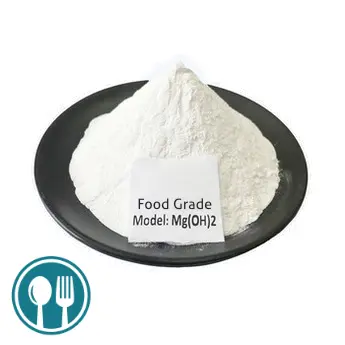Hebei Messi Biology Co., Ltd. stated that in the preparation of high-purity magnesium hydroxide (≥99%), under normal conditions, it is not easy to use lime milk precipitation to prepare high-purity magnesium hydroxide, and it must go through a more complex purification process including washing and other processes) , especially the problem of calcium reduction and boron removal. This problem is also related to raw materials. Comparing under the same conditions, it is advantageous to use bitter brine after seawater salt production as raw material to prepare high-purity magnesium hydroxide. When using the ammonia method to precipitate magnesium hydroxide, high-purity magnesium hydroxide can be easily produced by controlling the pH value to about 11 and undergoing a purification process (which is simpler than using the milk of lime method).
In the magnesium hydroxide purification process, the washing step is prone to peptization, and the particles become finer, which increases the difficulty of filtration. We must try to prevent the occurrence of peptization, and maintain the stability of the magnesium hydroxide structure and surface charge during the washing process. changes occur. From the comparison of methods, crystalline magnesium hydroxide prepared by hydrothermal method has less adsorbed impurities and is easy to prepare high-purity magnesium hydroxide. High-purity magnesium hydroxide prepared by precipitation method is an intermediate product for the preparation of other high-purity magnesium series substances. For example, when using precipitation method to prepare high-purity magnesium oxide, the higher the purity of magnesium hydroxide, the more conducive it is to prepare high-purity magnesium oxide.
Generally speaking, the current main production processes of magnesium hydroxide include direct precipitation method, magnesium-containing ore grinding method, magnesium oxide hydration method, etc.
direct precipitation method
There are currently many methods for synthesizing magnesium hydroxide, among which the most commonly used method is the precipitation method. Due to its low price, simple and easy operation, it is easy to control the crystal morphology. In the precipitation method, salt solution precipitation is mainly used, usually using a strong base, such as ammonia or sodium hydroxide. The most widely used magnesium salts are magnesium chloride, magnesium sulfate and magnesium nitrate. The organic magnesium salt magnesium acetate is also occasionally used. The ammonia-based preparation of magnesium hydroxide in the direct precipitation method is divided into one-step method and continuous precipitation method. The continuous precipitation method realizes the recycling of resources, reduces production costs, and ensures the quality of the product.
Hydrothermal
Hydrothermal reaction can effectively control the morphology and size of magnesium hydroxide. The properties of the product mainly depend on the type of precursor magnesium salt, the solvent and the control of the reaction process temperature; the morphology of the product mainly depends on the pH of the solution and the reaction temperature. temperature. By adjusting the pH, the morphology of magnesium hydroxide can be synthesized into nanoflower, needle, flake and spherical shapes. The advantage of hydrothermal synthesis is that magnesium hydroxide with a specific surface area greater than 100m2/g can be obtained. The disadvantage is that high temperature and high pressure are used in industry and the cost is high.
sonochemical synthesis
The sonochemical method uses ultrasonic waves with a frequency in the range of 20kHz-10MHz to trigger the formation and collapse of microcells and generate active sites under high temperature and pressure. Compared with traditional methods, this method occurs under extreme conditions, can greatly increase the rate of reaction, and generate small crystals with more uniform morphology. The characteristic of sonochemical synthesis is that materials of different structural types can be produced by changing the reaction medium.
sol-gel method
The sol-gel method uses a highly active metal compound as a precursor, mixes the liquid phase, hydrolyzes, condenses, and generates metal hydroxide. A stable transparent sol is formed, which polymerizes slowly after aging to form a network structure. During the reaction, the solvent is lost and a gel is formed. The gel is subsequently dried and sintered to prepare nanomaterials. The reaction process of this method is that the precursor is dispersed and dissolved, hydrolyzed to generate monomers, polymerized to generate a sol, and through processes such as drying and heat treatment, nano-magnesium hydroxide materials are prepared.

